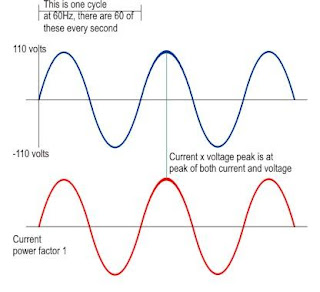Power
Quality (PQ) has become an interesting issue in the power industry since
the 1980s. It has increasingly affected both electric power end-users and
electric distribution utilities all over the world. The recent growth of
interest in power quality can be explained by these four major reasons:
1. Electricity
consumers are becoming better informed about power quality issues such as
voltage fluctuations, interruptions and switching transients. In addition, many
governments have revised their policies in order to regulate electric utilities
pushing them to improve power quality within the set standards and limits.
2.
Modern
load equipment with microprocessor-based controls and power electronic devices
are more sensitive to power quality changes than its conventional counterparts.
3.
Emphasis
on overall power system efficiency has resulted in growing applications of
high-efficiency devices, adjustable-speed motor drives and shunt capacitors for
power factor correction and reduction of losses. Consequently, increased
harmonic levels on electrical power systems have threatened the operability,
reliability and safety of the system.
4.
Many
things are now interconnected in the electrical network such as distributed
generation (DG) – particularly solar and wind, and the so-called integrated
processes. Both have a number of significant power quality issues that must be
addressed as part of the interconnection assessment.
The
concern for power quality is expected to increase, especially now that it has
direct economic impacts to equipment suppliers, utilities and the end-users.
What
is Power Quality?
Power
Quality (PQ) has several definitions depending on one’s perspective. The
term “power quality” originated in 1968 from a U.S. Navy study, after
specifications for the power required by electronic equipment, including the
use of monitoring equipment presents a good overview of the power quality
field. Currently, there is no consensus on the use of the word, but the
following terminologies are common to describe power quality:
A. Power
Quality is the concept of powering and grounding sensitive equipment in a
manner that is suitable to the operation of that equipment - ANSI/IEEE
B.
The
IEC uses the term Electromagnetic Compatibility (EMC), which is not the
same as power quality, but there is a strong overlap between the two terms. EMC
is the ability of an equipment or system to function satisfactorily in its
electromagnetic environment without introducing intolerable electromagnetic
disturbances to anything in that environment. However, the IEC has already
started a project group on power quality and has adopted the following
definition: Set of parameters defining the properties of the power supply
as delivered to the user in normal operating conditions in terms of continuity
of supply and characteristics of voltage (symmetry, frequency, magnitude, and
waveform).
C. Quality
of Power Supply includes a technical part and a non-technical part
referred to as the quality of service. The latter deals with the interaction
between the utility and its customers (i.e. speed of response to complaints and
calls).
Moreover,
power quality and voltage quality are being used interchangeably by most
literatures. Although electric power is proportional to both voltage and
current, in most cases, it is the quality of voltage that is being
addressed - as the power supply system can only control the quality of the
voltage. Standards in the power quality area are mostly dedicated to
maintaining the supply voltage within certain limits.
Nonetheless,
electric current and voltage are strongly related in any practical power
system. For example:
1. Electric
current resulting from a short-circuit condition would reduce voltage, or even
cause it to drop to zero.
2. Nonlinear
loads produce harmonic currents that can distort the voltage as they pass
through the system impedance. Therefore, a distorted voltage is presented to
other end users.
3. Lightning
current passing through the electrical power system causes high-impulse
voltages that often lead to flash over insulation and to other phenomena such
as faults.
Thus,
it is also important to address the current quality aside from voltage quality,
to understand the basis of many power quality problems.
 |
| Ideal Voltage and Current Waveform |
Summing
up, Power Quality is the study or description of both voltage and
current disturbances. It can be seen as the combination of voltage quality and
current quality. As an example, the ideal voltage and current waveform is a
pure sinewave of constant magnitude and frequency (typically 50 or 60 Hz). Any
deviation from the ideal that exceeds the limits set by the Standards is a
power quality issue.
Play
Video: What is Power Quality?
References:
Bollen,
M. (2000). Understanding Power Quality Problems: Voltage Sags and Interruptions
Dugan,
R., McGranaghan, M., Santoso, S., and Beaty, H.W. (2004). Electrical Power
Systems Quality (2nd ed.)


No comments:
Post a Comment